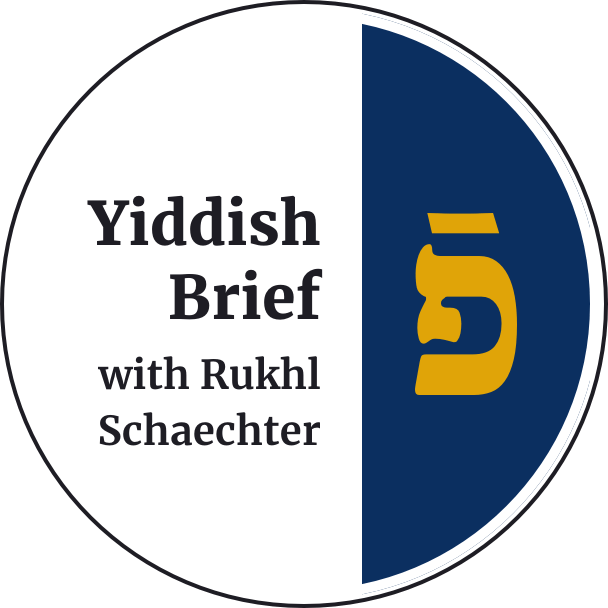The renowned cantor, Yossele Rosenblatt, 1918 Courtesy of the Library of Congress
Long before cantors were household names in America, they were hidden treasures in the Hasidic heartlands of Europe.
From its beginnings in the 18th century, the Hasidic movement placed song and melody at the heart of spiritual life. One early master, Rabbi Pinchas of Koretz, often spoke of the power of music, despite lacking any musical talent himself. “Master of the Universe,” he once said after a Sabbath meal, “if I could sing, I wouldn’t let You stay up above. I’d hound You with my melody until You came down and stayed with us.”
Over time, Hasidic song expanded to include cantorial music (known as khazones in Yiddish), and professional cantors began visiting the great Hasidic courts, lifting spirits and stirring emotion among rebbes and pilgrims alike. One of the most celebrated was Zeidel Rovner (1856-1943), whose voice was cherished by some of the most revered Hasidic leaders of the late nineteenth and early twentieth centuries.
Jewish music scholar Yaakov Mazor wrote that on at least one occasion, when Rovner visited the court of Rabbi Yisroel, the Hasidic leader of Vizhnits, Ukraine for the High Holy Days, the rebbe was so deeply moved by Rovner’s voice that he broke with custom,stepping aside and asking Rovner to lead the prayers in his place.
In many Hasidic courts, rebbes appointed professional cantors — often backed by choirs — whose compositions helped shape the spiritual atmosphere of the court. One such figure was Yosef Volynetz, better known as Yossele Tolner (Yossele from the town of Tolne). He served as cantor to Rabbi Dovid of Tolna, who deeply valued his music. Each Sabbath, Tolner introduced a new melody, supported by a choir of about twenty-five choristers. His music echoed beyond Tolna, as it was carried from court to court by the Hasidim who heard it.
Before he became a household name, the iconic cantor Yosele Rosenblatt briefly considered a more humble way of life. Raised in a deeply Hasidic family, he hoped to serve as a court cantor and even approached Rabbi Dovid Moshe of Chortkiv about it. But the rebbe saw something greater: “Here, there is no future for you,” he told the young singer. “Continue traveling. With the renown you will achieve, you will rise to great heights.”
And Rosenblatt did just that. He arrived in New York in 1912 and was soon appointed cantor at Congregation Ohab Zedek in Harlem, at that time one of New York City’s most prominent Orthodox synagogues. His voice drew such crowds that the sanctuary overflowed, especially on the High Holy Days.
Many American Jews had a deep love for cantorial music, and major synagogues paid handsomely for talent. When Ohab Zedek hired Rosenblatt, they offered him an astounding $2,400 a year — nearly $700,000 in today’s dollars. His contract even let him travel extensively. Touring the country, he drew crowds to both concert halls and synagogues, becoming not only a Jewish icon but a national musical celebrity.
Though deeply rooted in Hasidic tradition, Rosenblatt cautiously stepped into American entertainment. When The Jazz Singer premiered in 1927 — the first feature film with synchronized sound — it told the story of a cantor’s son torn between tradition and stardom. Rosenblatt made a short but memorable appearance. Despite the small role, his name appeared on posters beside the film’s stars. His concerts were later advertised in The New York Times alongside leading secular performers — evidence of the unique space he occupied as both religious figure and mainstream celebrity.
Rosenblatt quickly became an icon. His image appeared in news stories, advertisements, and even editorial cartoons — in Yiddish, English-Jewish, and mainstream outlets alike. He was often compared to opera legend Enrico Caruso and was even dubbed The Jewish Caruso.
Rovner, who arrived in America in 1914, also rose to prominence, eventually rubbing shoulders with political elites. In 1926, at a public ceremony at City Hall, he offered a cantorial blessing to Mayor Jimmy Walker, who responded by granting him the symbolic “freedom of the city.” Later that year, Rovner visited the White House, where President Calvin Coolidge warmly welcomed him. Rovner sang a piece he had composed especially for the occasion — a moment of musical diplomacy between synagogue and state.
Cantorial music has deep roots, and Hasidic tradition gave it a distinct style and spirit. In the large Hasidic courts of Europe, melodies served as a means to inspire, comfort, and pray. In America, the sound reached wider audiences — in spacious synagogues and on public stages — but its essence stayed the same. Hasidic cantors brought more than songs; they brought feeling, memory, and faith. And in every note, something of the old Hasidic world.
